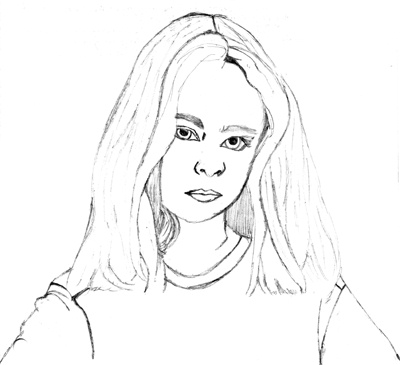All Nonfiction
- Bullying
- Books
- Academic
- Author Interviews
- Celebrity interviews
- College Articles
- College Essays
- Educator of the Year
- Heroes
- Interviews
- Memoir
- Personal Experience
- Sports
- Travel & Culture
All Opinions
- Bullying
- Current Events / Politics
- Discrimination
- Drugs / Alcohol / Smoking
- Entertainment / Celebrities
- Environment
- Love / Relationships
- Movies / Music / TV
- Pop Culture / Trends
- School / College
- Social Issues / Civics
- Spirituality / Religion
- Sports / Hobbies
All Hot Topics
- Bullying
- Community Service
- Environment
- Health
- Letters to the Editor
- Pride & Prejudice
- What Matters
- Back
Summer Guide
- Program Links
- Program Reviews
- Back
College Guide
- College Links
- College Reviews
- College Essays
- College Articles
- Back
Anorexia nervosa
Anorexia nervosa is also known as Anorexia, is an eating disorder characterized by refusal to maintain a healthy body weight and an obsessive fear of gaining weight. It is often coupled with a distorted self image. Persons with anorexia nervosa continue to feel hunger, but deny themselves all but very small quantities of food. The average caloric intake of a person with anorexia nervosa is 600–800 calories per day, but there are extreme cases of complete self-starvation.It is a serious mental illness with a high incidence of comorbidity and the highest mortality rate of any psychiatric disorder.
Anorexia most often has its onset in adolescence and is most prevalent among adolescent girls. While it can affect men and women of any age, race, and socioeconomic and cultural background, Anorexia nervosa occurs in females 10 times more than in males.
A person with anorexia nervosa may exhibit a number of signs and symptoms, some of which are listed below.
1. obvious and dramatic wight loss.
2. soft, fine hair grows on face and body.
3. obsession with calories and fat content.
4. dieting despite being thin or dangerously underweight.
5. fear of gaining weight or becoming overweight.
6. cuts food into tiny pieces; refuses to eat around others; hides or discards food.
7. may engage in self-induced vomiting; may run to the bathroom after eating in order to vomit and quickly get rid of the calories.
8. perceives self to be overweight despite being told by others they are too thin.
9. may frequently be in a sad, lethargic state.
10. swollen joints.
There are also some dermatologic signs of anorexia nervosa, for example xerosis, edema, acne, pellagra, paronychia, and others.
Anorexia nervosa is classified as an Axis I disorder in the Diagnostic and Statistical Manual of Mental Health Disorders published by the American Psychiatric Association. The DSM-IV should not be used by laypersons to diagnose themselves.
Treatment for anorexia nervosa tries to address three main areas. 1) Restoring the person to a healthy weight; 2) Treating the psychological disorders related to the illness; 3) Reducing or eliminating behaviours or thoughts that originally led to the disordered eating.
Medication:
Olanzapine: has been shown to be effective in treating certain aspects of AN including to help raise the body mass index and reduce obsessionality, including obsessional thoughts about food.
Therapy
>Cognitive behavioral therapy (CBT)
>Acceptance and commitment therapy
>Cognitive Remediation Therapy (CRT)
>Family therapy
>Maudsley Family Therapy

Similar Articles
JOIN THE DISCUSSION
This article has 0 comments.

first of all, i've seen so many girls been TOO thin and this makes me really sad and
secondly, i want to advise teenage girls that the form of the idols, nowadays, are not real and they should feel good with themselves however they are.